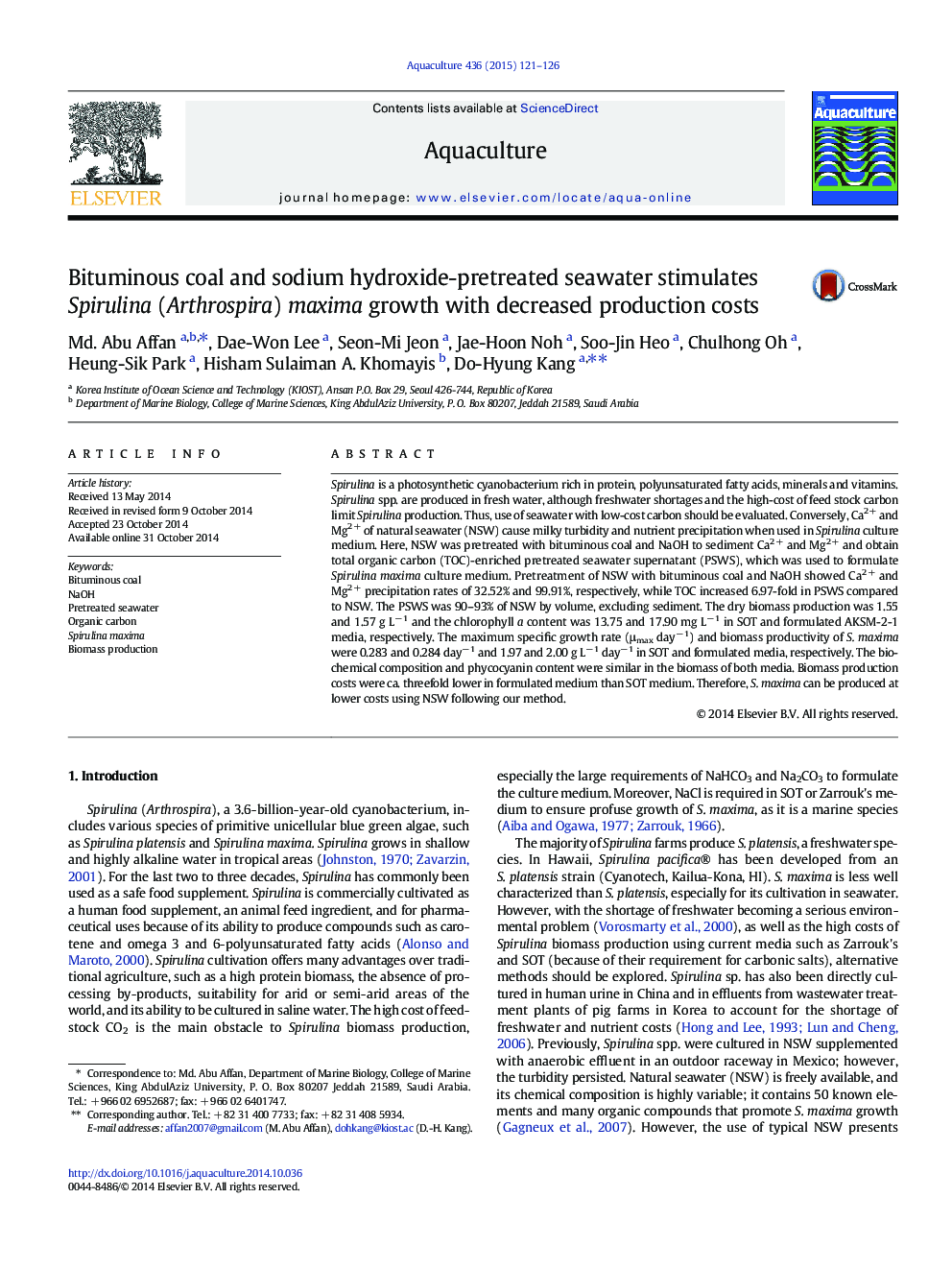| Article ID | Journal | Published Year | Pages | File Type |
|---|---|---|---|---|
| 8494816 | Aquaculture | 2015 | 6 Pages |
Abstract
Spirulina is a photosynthetic cyanobacterium rich in protein, polyunsaturated fatty acids, minerals and vitamins. Spirulina spp. are produced in fresh water, although freshwater shortages and the high-cost of feed stock carbon limit Spirulina production. Thus, use of seawater with low-cost carbon should be evaluated. Conversely, Ca2 + and Mg2 + of natural seawater (NSW) cause milky turbidity and nutrient precipitation when used in Spirulina culture medium. Here, NSW was pretreated with bituminous coal and NaOH to sediment Ca2 + and Mg2 + and obtain total organic carbon (TOC)-enriched pretreated seawater supernatant (PSWS), which was used to formulate Spirulina maxima culture medium. Pretreatment of NSW with bituminous coal and NaOH showed Ca2 + and Mg2 + precipitation rates of 32.52% and 99.91%, respectively, while TOC increased 6.97-fold in PSWS compared to NSW. The PSWS was 90-93% of NSW by volume, excluding sediment. The dry biomass production was 1.55 and 1.57 g Lâ 1 and the chlorophyll a content was 13.75 and 17.90 mg Lâ 1 in SOT and formulated AKSM-2-1 media, respectively. The maximum specific growth rate (μmax dayâ 1) and biomass productivity of S. maxima were 0.283 and 0.284 dayâ 1 and 1.97 and 2.00 g Lâ 1 dayâ 1 in SOT and formulated media, respectively. The biochemical composition and phycocyanin content were similar in the biomass of both media. Biomass production costs were ca. threefold lower in formulated medium than SOT medium. Therefore, S. maxima can be produced at lower costs using NSW following our method.
Related Topics
Life Sciences
Agricultural and Biological Sciences
Aquatic Science
Authors
Md. Abu Affan, Dae-Won Lee, Seon-Mi Jeon, Jae-Hoon Noh, Soo-Jin Heo, Chulhong Oh, Heung-Sik Park, Hisham Sulaiman A. Khomayis, Do-Hyung Kang,
